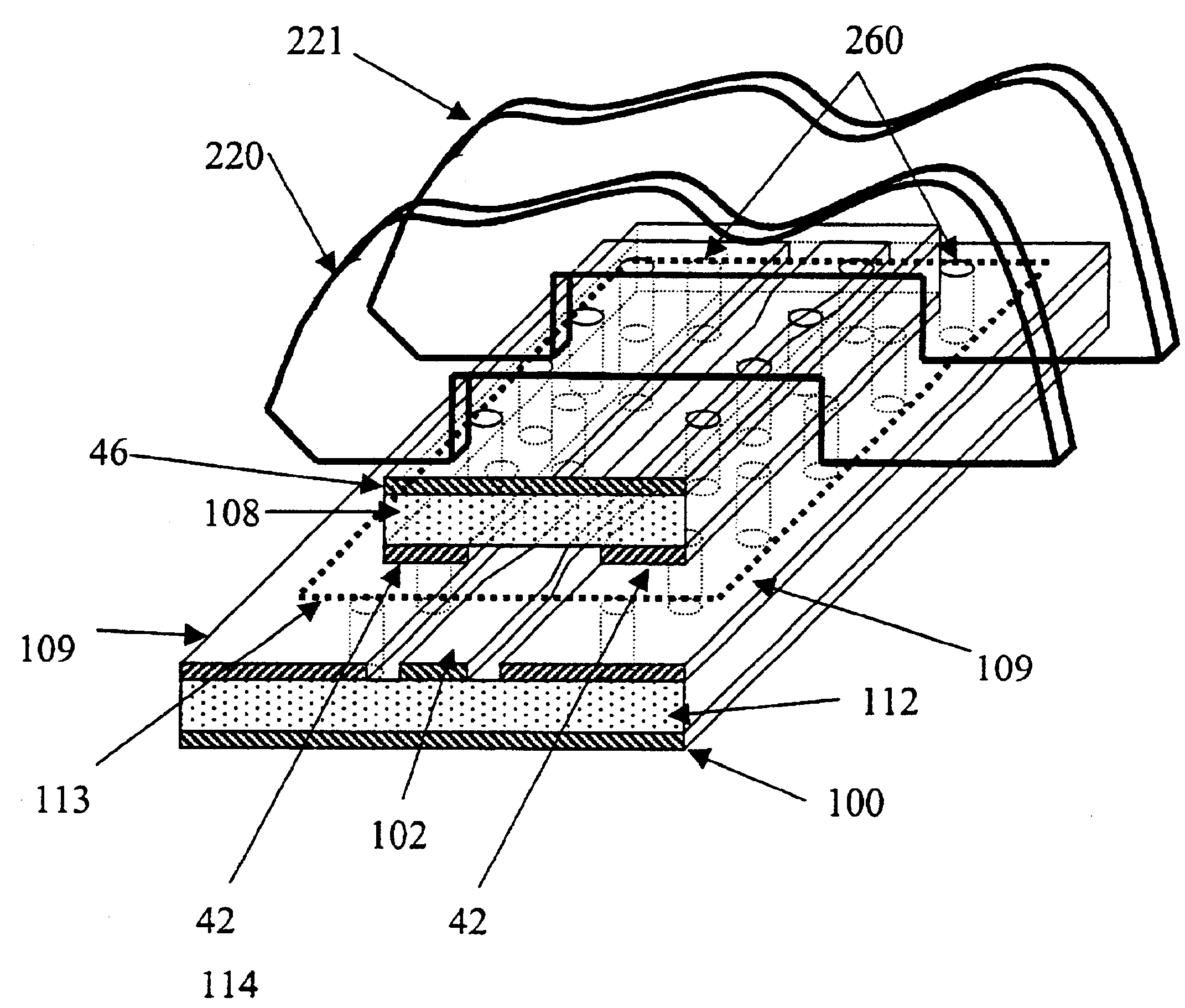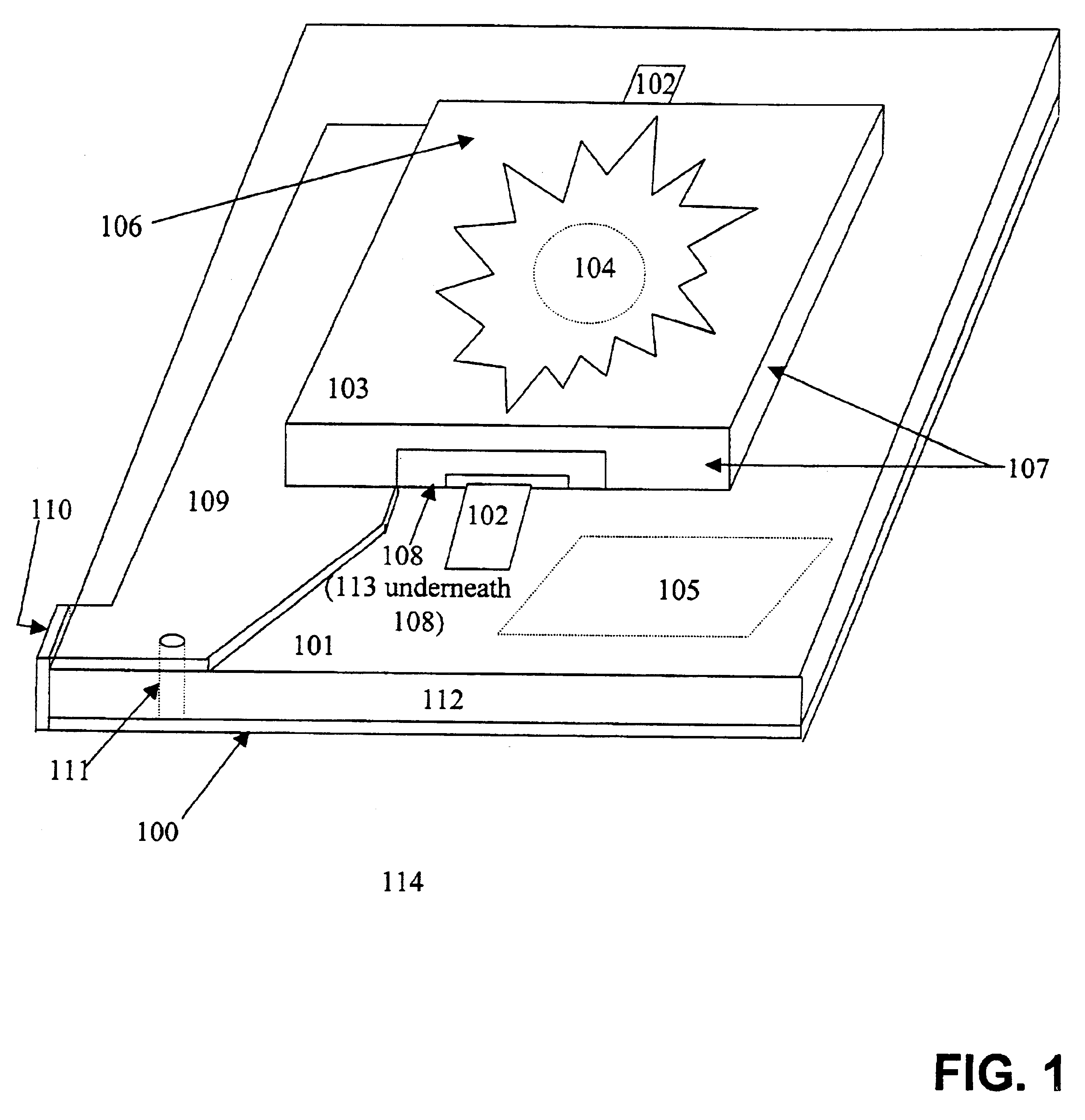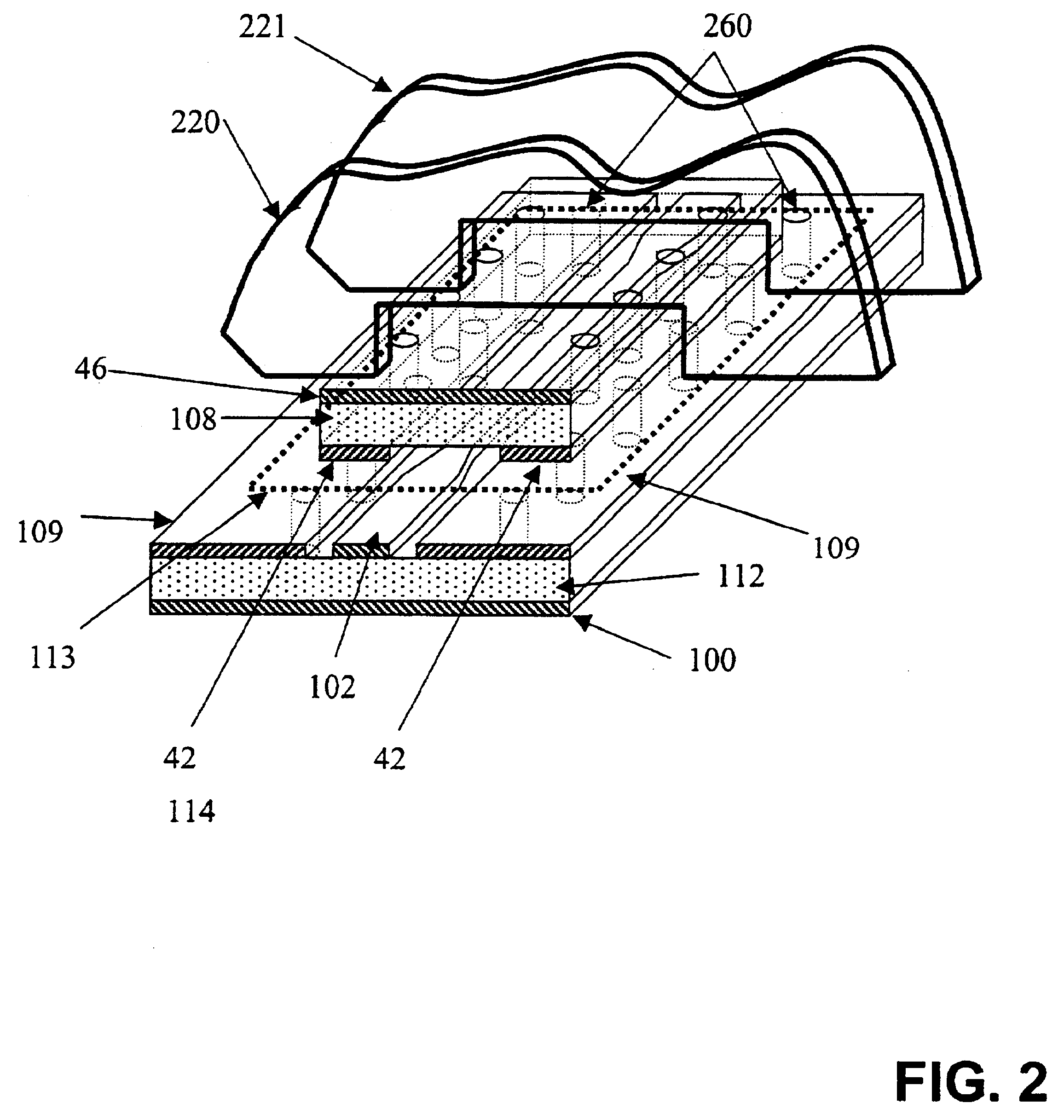System and method of providing highly isolated radio frequency interconnections
a radio frequency interconnection and highly isolated technology, applied in the direction of waveguides, non-printed jumper connections, waveguide type devices, etc., can solve the problems of microstrips being subject to emi from nearby conductors, coaxial cables utilized as isolated interconnection transmission lines are not compatible with automated smt assembly process, and soldering at a much greater cos
- Summary
- Abstract
- Description
- Claims
- Application Information
AI Technical Summary
Benefits of technology
Problems solved by technology
Method used
Image
Examples
first embodiment
[0037]In the invention a fully shielded interconnection between shielded cavities 220, 221 is provided. The SMT component 108 when applied to a printed wiring assembly having a conductive pattern 113 appropriate to form part of a stripline structure may be utilized to form a completely shielded interconnection between a first 220 and a second 221 shielded cavity. The completely shielded interconnection is formed from the printed wiring board by virtue of the conductive pattern, functioning in conjunction with the SMT part disposed on the printed wiring board.
[0038]The SMT component 108 is attached to the base PCB 115 so that conductive layers 42 and 113 are substantially aligned and in electrical contact. One or more grounded isolating walls 220, 221 surround and are in electrical contact with the top layer 46 of the SMT component 108, thereby minimizing EMI between the SMT structure and surrounding circuit blocks or structures shielded, and further minimizing EMI between separate c...
second embodiment
[0046]In the conductive area 113, the locations of the multiple conductive plated through holes 260 fall outside of the outline of the SMT part, but are close enough to it to still provide sufficient grounding and a good solder joint. Solder wicking as described above can be prevented by selectively applying an optional pattern or layer of solder resisting film (not shown) over holes 260, using methods known to those skilled in the art.
[0047]FIG. 5 is a side cross-section view of the attachment of the SMT component to the printed wiring assembly and to the shield assembly. As shown shields 220,221 are coupled to The SMT component, which is in turn coupled to the base PCB 115 that includes the conductive pattern.
PUM
 Login to View More
Login to View More Abstract
Description
Claims
Application Information
 Login to View More
Login to View More - R&D
- Intellectual Property
- Life Sciences
- Materials
- Tech Scout
- Unparalleled Data Quality
- Higher Quality Content
- 60% Fewer Hallucinations
Browse by: Latest US Patents, China's latest patents, Technical Efficacy Thesaurus, Application Domain, Technology Topic, Popular Technical Reports.
© 2025 PatSnap. All rights reserved.Legal|Privacy policy|Modern Slavery Act Transparency Statement|Sitemap|About US| Contact US: help@patsnap.com



